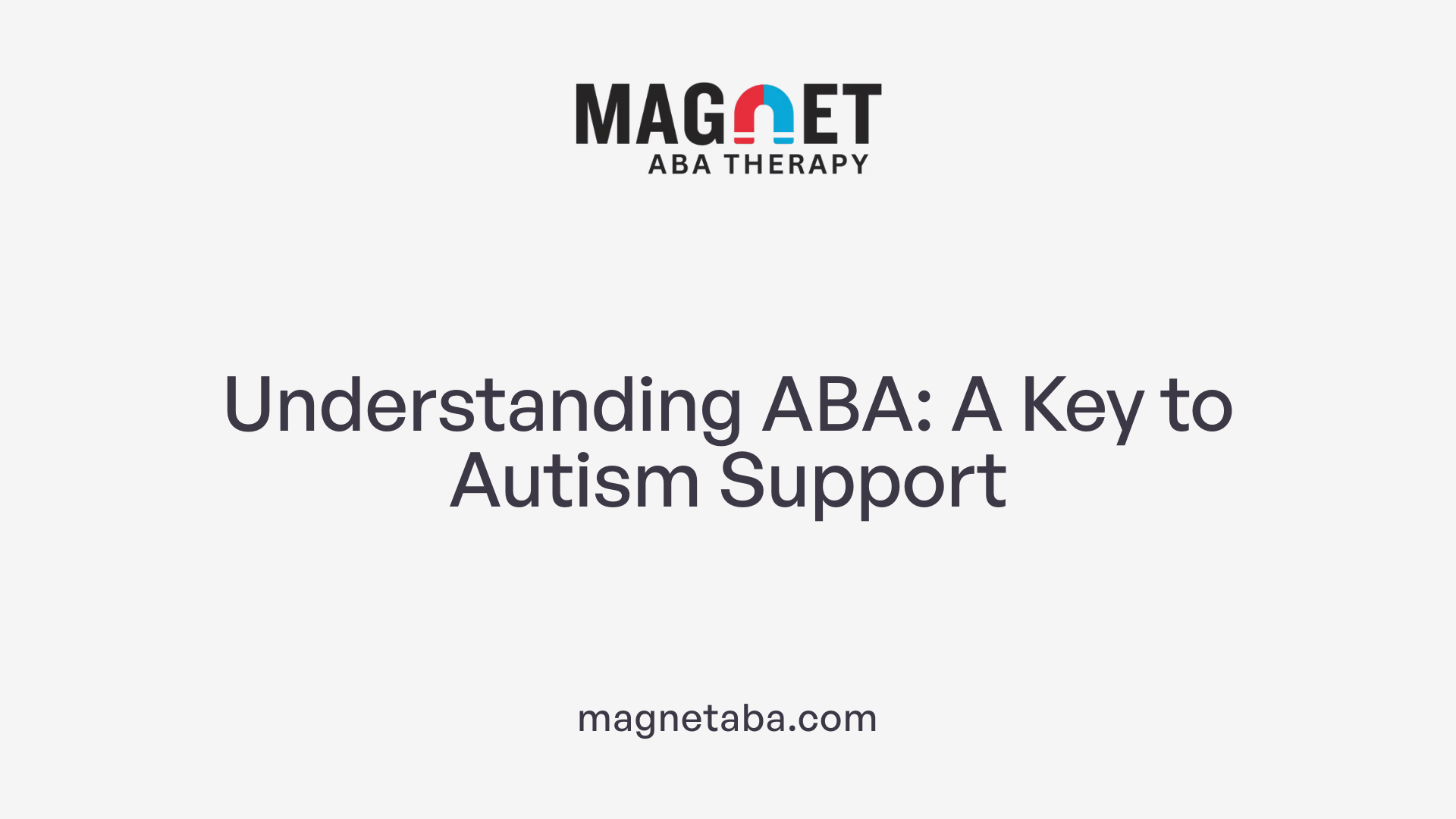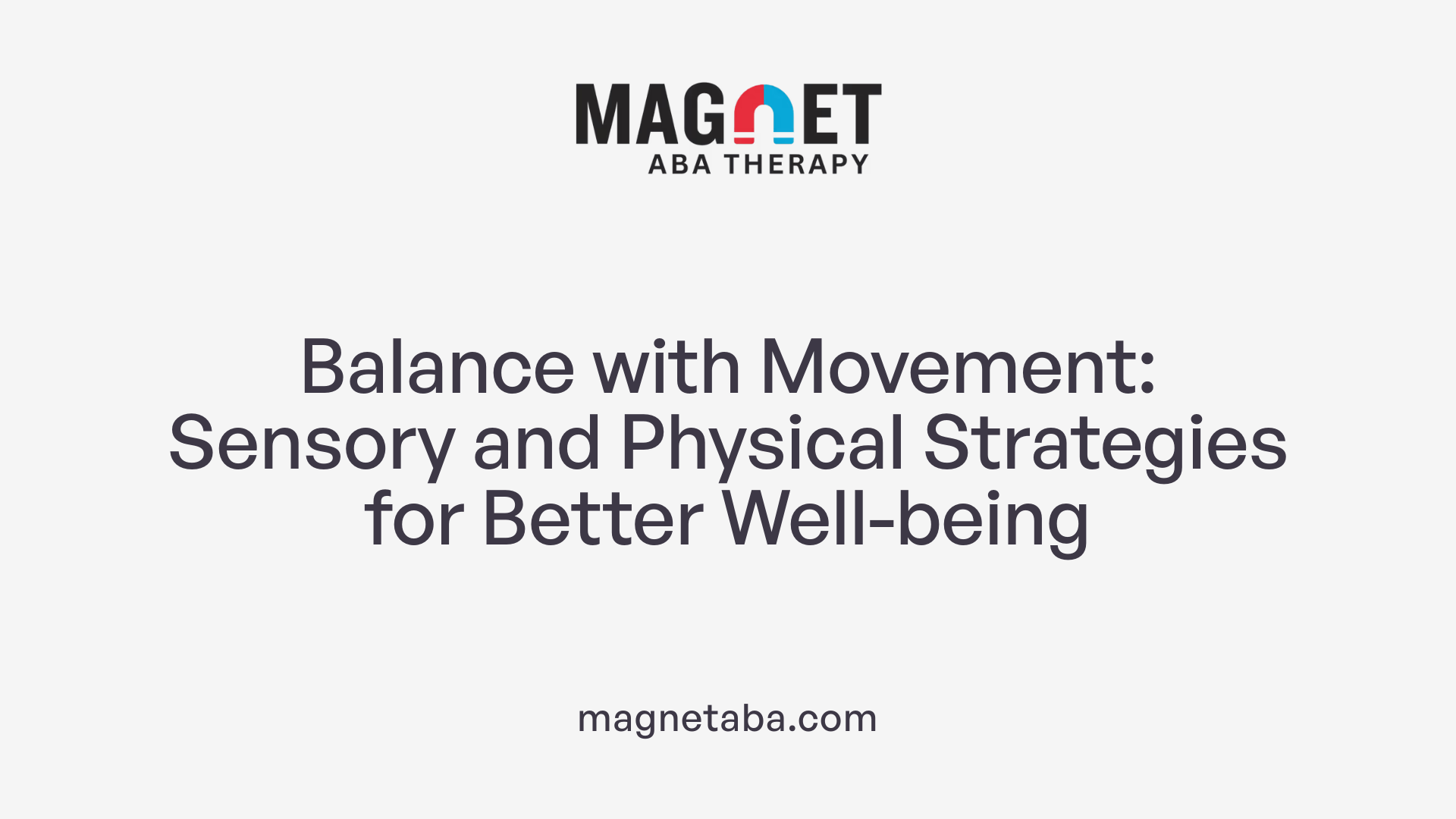Understanding Behavioral Therapy and Screen Habits
In today's digital age, managing screen time in children with autism is a critical component of fostering well-being and healthy development. Utilizing behavioral strategies, particularly those grounded in Applied Behavior Analysis (ABA), can significantly aid in establishing balanced screen habits while supporting essential life skills. This article explores how behavior analysis therapies support children with autism and offers practical approaches to build healthy screen habits that enhance their overall quality of life.
What Is Applied Behavior Analysis and Its Role in Autism Support?

What is Applied Behavior Analysis therapy and how is it used to support individuals with autism?
Applied Behavior Analysis (ABA) therapy is a scientifically-supported approach that uses the principles of learning and behavior to help individuals with autism spectrum disorder (ASD). ABA focuses on developing new skills, such as communication and social interaction, while reducing unwanted behaviors. It is grounded in operant conditioning, analyzing antecedents (what happens before a behavior), behaviors themselves, and consequences to promote positive changes.
Key techniques used in ABA
ABA therapy employs a variety of techniques tailored to the individual's needs. These include:
- Positive reinforcement: Rewarding desired behaviors to increase their occurrence.
- Discrete Trial Training (DTT): Structured teaching sessions that break skills into small steps.
- Natural Environment Training (NET): Teaching skills in real-life settings.
- Video modeling and picture exchange communication system (PECS): Visual aids for enhancing communication.
- Prompting and fading: Guiding a behavior and gradually reducing help.
- Functional Communication Training: Teaching alternative communication to replace challenging behaviors.
- Task analysis and chaining: Breaking complex tasks into simple steps.
- Token economy and shaping: Systems to encourage gradual behavior improvement.
Settings for ABA delivery
ABA therapy is flexible and can be provided in multiple environments, including at home, in clinics, schools, and community settings. This ensures skills generalize across contexts and supports seamless integration of learned behaviors into daily life.
Goals of ABA for autistic individuals
ABA aims to enhance independence and quality of life. Goals focus on:
- Improving communication and language skills
- Developing social skills and emotional regulation
- Teaching daily living skills like hygiene and self-care
- Reducing repetitive or harmful behaviors
Early intervention importance
Starting ABA early, usually before age 4 and at intensive levels (20+ hours a week), is linked to greater developmental progress. Early intervention helps children acquire foundational skills during critical periods, supporting long-term success.
ABA therapy has evolved to emphasize positive reinforcement and respect individual differences, addressing past criticisms. It remains an evidence-based method endorsed by major health organizations and remains central in supporting autistic individuals to reach their full potential.
Benefits of Behavioral Analysis Therapies for Individuals with Autism

What benefits can individuals with autism expect from behavioral analysis therapies?
Behavioral analysis therapies, particularly Applied Behavior Analysis (ABA), offer numerous benefits for individuals with autism. These therapies focus on developing a wide range of skills, including communication, social interaction, self-care, and other daily living activities. ABA uses evidence-based techniques such as positive reinforcement, prompting, task analysis, and natural environment training to promote positive behaviors and reduce challenging ones.
Skill development outcomes
ABA therapy can lead to meaningful improvements in language abilities, cognitive functioning, and social skills. Early and consistent intervention is especially effective, helping children acquire essential communication tools and improve interactions with peers and family.
Behavior improvements
Through structured and individualized approaches, ABA assists in replacing unwanted behaviors with more appropriate alternatives. Techniques like discrete trial training and functional communication training target specific behaviors to enhance learning and adaptation.
Emotional regulation advancements
ABA supports emotional well-being by teaching coping strategies and self-regulation skills. This helps autistic individuals manage their emotions better, contributing to reduced anxiety and improved focus.
Quality of life enhancements
By fostering independence in daily tasks such as hygiene and dressing, ABA therapies contribute to greater confidence and autonomy. Improved communication and social skills enable individuals to build stronger relationships, enriching their social lives.
Evidence supporting therapy effectiveness
ABA is backed by scientific research and endorsed by prominent organizations including the U.S. Surgeon General and the American Psychological Association. It is delivered across various settings, including homes, clinics, schools, and communities, ensuring flexible application suited to individual needs.
Overall, behavioral analysis therapies provide a comprehensive framework for supporting individuals with autism, enhancing their skills, behaviors, emotional health, and overall quality of life.
Professionals Delivering Behavioral Analysis Therapies

Who typically provides behavioral analysis therapies for autism?
Behavioral analysis therapies for autism are primarily delivered by licensed professionals specially trained in applied behavior analysis (ABA). The central role in therapy provision is often held by Board Certified Behavior Analysts (BCBAs). These experts have in-depth knowledge and credentials to design, implement, and supervise personalized treatment plans tailored to each individual's unique needs.
In addition to BCBAs, licensed clinicians and therapists with specialized training in ABA also contribute to therapy delivery. These may include psychologists, speech-language pathologists, and occupational therapists who incorporate behavioral strategies into their treatment approaches.
Specialized autism organizations frequently provide structured ABA programs, ensuring therapies are evidence-based and adhere to current best practices. Such organizations often work within clinics, schools, and community settings, offering a spectrum of services and supports.
Adherence to rigorous standards and protocols is critical in therapy delivery. Licensed providers follow guidelines established by professional bodies, such as the Behavior Analyst Certification Board, and align with recommendations from recognized health authorities. This structured approach guarantees quality, consistency, and effectiveness in behavioral interventions for autistic individuals.
Through collaboration among BCBAs, clinicians, therapists, and autism-specific organizations, behavioral analysis therapies are delivered in a scientifically supported and compassionate manner, helping individuals with autism develop vital skills and enhance their quality of life.
Measuring the Effectiveness of Behavioral Therapies in Autism
How is the effectiveness of autism-focused behavioral therapies measured?
The effectiveness of behavioral therapies, particularly Applied Behavior Analysis (ABA), for autistic individuals is measured through a systematic approach using standardized and validated tools. These assessment instruments evaluate progress across several critical domains, including adaptive behaviors, core autism symptoms, cognitive abilities, language development, and behavioral challenges.
What standardized assessment tools are used?
Commonly employed tools include:
- Vineland Adaptive Behavior Scales: Measures adaptive functioning such as daily living skills and socialization.
- Autism Diagnostic Observation Schedule (ADOS) and Autism Diagnostic Interview-Revised (ADI-R): Assess core symptoms of autism.
- Wechsler scales: Evaluate intellectual functioning.
- Peabody Picture Vocabulary Test: Tracks language development.
- Child Behavior Checklist: Screens for challenging behaviors.
These instruments provide objective data that assist clinicians in understanding the individual’s baseline and monitoring changes over time.
How is data collected and used?
Data collection is integral to the therapy process. It involves regular, structured sessions where behavioral data is gathered consistently. Information from these assessments is reviewed to determine therapy effectiveness and guide modifications tailored to the child's evolving needs.
What domains of progress are measured?
Progress is monitored in areas such as communication skills, social interaction, daily living skills, emotional regulation, and reduction in problem behaviors. This comprehensive approach ensures a well-rounded view of the autistic individual's development.
What is the impact of measurable outcomes?
Research including meta-analyses has shown that measurable improvements in IQ, communication, and adaptive behavior are strongly linked with ABA therapy. Effect sizes in these domains range from moderate to large, highlighting the real-world benefits of these interventions. This measurable success supports ongoing therapy adoption and helps families track meaningful gains.
| Domain | Assessment Tool(s) | Purpose/Description |
|---|---|---|
| Adaptive Functioning | Vineland Adaptive Behavior Scales | Evaluates practical life skills and social abilities |
| Core Autism Symptoms | ADOS, ADI-R | Measures autism-specific behaviors |
| Cognitive Ability | Wechsler Scales | Assesses intellectual functioning |
| Language Development | Peabody Picture Vocabulary Test | Tracks language acquisition |
| Behavioral Challenges | Child Behavior Checklist | Identifies problematic behaviors |
This structured, data-driven evaluation process is crucial for optimizing behavioral therapies and enhancing the long-term outcomes for autistic individuals.
Building Predictable Routines to Support Healthy Screen Habits

Why Are Predictability and Structure Important for Autistic Individuals?
Autistic individuals often rely on predictability and structure to feel safe and secure. Having consistent routines can reduce the uncertainty that frequently causes anxiety and stress. When days follow a known pattern, it supports well-being by providing clear expectations.
How Can Visual Schedules and Apps Help?
Visual schedules using pictures, charts, or digital apps are powerful tools to map out daily activities. These visual cues help autistic individuals anticipate what’s next, making transitions smoother and reducing feelings of being overwhelmed. For example, a schedule can outline when screen time will start and end, helping establish balanced usage.
What Sensory-Friendly Strategies Can Be Incorporated?
Integrating sensory-friendly elements into routines further supports comfort and focus. Creating calming sensory environments and using tools like fidget toys or deep-pressure activities during breaks can improve emotional regulation. For screen time, incorporating sensory breaks and limiting screen exposure before bedtime can prevent overstimulation.
How Does Routine Benefit Anxiety and Stress Levels?
Routines act as a stabilizing force by providing structure amid potential chaos. They enable autistic individuals to anticipate and prepare for daily events, which naturally reduces anxiety. Combining predictable schedules with sensory supports helps create a balanced environment that promotes relaxation and reduces stress levels effectively.
Incorporating Physical Activity and Sensory Strategies to Balance Screen Time

What Physical Activities Benefit Sensory Input and Motor Skills in Autistic Individuals?
Regular engagement in physical activities such as swimming, yoga, trampoline jumping, and walking is highly beneficial. These activities provide essential sensory input, support the development of motor skills, and help reduce stress and anxiety. By incorporating these forms of exercise into daily routines, autistic individuals can enhance their overall physical health and emotional well-being.
How Can Sensory Processing Differences Be Supported?
Sensory processing varies widely among autistic individuals, with some experiencing hypersensitivity and others hyposensitivity. Creating sensory-friendly environments is vital. This can include:
- Designated quiet spaces with calming lighting and textures
- Use of fidget tools to provide tactile stimulation
- Deep-pressure activities like weighted blankets or vests
- Scheduled sensory breaks to help regulate sensory input
These strategies help improve focus and emotional regulation throughout the day.
What Role Do Sensory Breaks and Tools Play?
Sensory breaks serve as intentional pauses during daily activities to help autistic individuals manage sensory overload or under-stimulation. Fidget tools, sensory toys, and deep-pressure techniques are practical aids used during these breaks. By incorporating these sensory supports, individuals can better control their emotions and maintain attention, leading to improved functioning in various settings.
How Can Screen Time Be Balanced with Outdoor Activities?
Balancing screen time with physical and outdoor activities is essential for mood stabilization and self-regulation. Limiting screen exposure, especially before bedtime, and encouraging time spent outdoors provide natural light and fresh air, which positively affect energy and mood. Outdoor activities combined with physical exercise help counterbalance sedentary screen habits, promoting a healthier lifestyle for autistic individuals.
Promoting Emotional Regulation and Social Skills Through Behavioral Strategies

Teaching self-awareness and coping skills
Helping autistic individuals develop self-awareness is crucial for managing their emotions effectively. Techniques such as deep breathing exercises and journaling encourage reflection and provide tools to cope with stress. Modeling positive coping strategies also reinforces these skills, supporting emotional regulation.
Role-playing and social stories for social confidence
Role-playing scenarios and social stories are effective methods to build social skills and confidence. These approaches prepare individuals for real-life interactions by simulating social situations, teaching appropriate responses, and clarifying social boundaries. This hands-on learning promotes meaningful social connections.
Techniques for managing emotions during screen use
Screen time can sometimes lead to emotional dysregulation. Balancing screen use with outdoor activities and play supports mood and self-regulation. Integrating relaxation techniques such as sensory breaks and the use of calming sensory inputs helps manage overstimulation and maintain emotional balance during screen interactions.
Encouraging social connection rituals and independence
Establishing social connection rituals like greetings, turn-taking, and shared meals helps foster social skills and confidence. Meanwhile, encouraging independence through self-care routines and household responsibilities promotes responsibility and personal growth. Combining these strategies creates a supportive environment that nurtures both social and emotional development.
Cultivating Healthy Screen Habits for Lifelong Benefits
Effective management of screen time through behavioral strategies rooted in ABA and individualized supports can empower autistic individuals to thrive both digitally and socially. Establishing structured routines, incorporating physical and sensory activities, and fostering emotional and social skills enhance quality of life and independence. With professional guidance and family involvement, these approaches build healthy screen habits that contribute positively to development and well-being. As we understand and apply these science-backed strategies, we open meaningful pathways for autism support that embrace each person's unique needs and strengths.
References
- What Are Healthy Habits for Autism?
- 10 Healthy Habits for Autism That Improve Daily Life
- ABA Therapy: The Ultimate Guide
- Applied Behavior Analysis (ABA)
- Adaptive Behavioral Treatment for Autism Spectrum ...
- Autism/Applied Behavior Analysis
- Applied Behavior Analysis (ABA)
- Applied Behavior Analysis (ABA)
- The Controversy Around ABA
- Treatment and Intervention for Autism Spectrum Disorder











